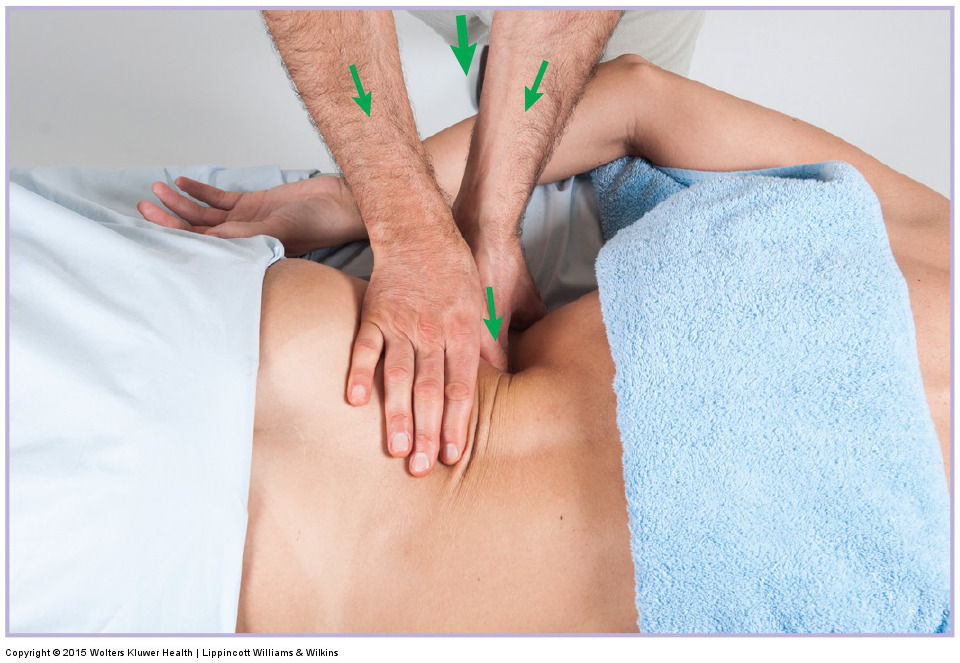Can massage benefit clients with myofascial trigger points?
 A study by Albert Moraska and colleagues from the University of Colorado assessed the effects of single and multiple massage treatments on the pressure-pain threshold (PPT) at myofascial trigger points in people with myofascial pain syndrome experienced as a tension-type headache. The study was published in the February 2017 issue of American Journal of Physical Medicine & Rehabilitation.
A study by Albert Moraska and colleagues from the University of Colorado assessed the effects of single and multiple massage treatments on the pressure-pain threshold (PPT) at myofascial trigger points in people with myofascial pain syndrome experienced as a tension-type headache. The study was published in the February 2017 issue of American Journal of Physical Medicine & Rehabilitation.
The study involved 62 participants with episodic or chronic tension-type headache. They were randomized to receive 12 twice-weekly 45-min massage treatments, or sham (fake) ultrasound sessions, or a wait-list control. Massage therapy treatment utilized was primarily focused on trigger point release (sustained ischemic compression) of MTrPs in the bilateral upper trapezius and suboccipital muscles.
The researchers found that PPT increased across the study timeframe in all four muscle sites (suboccipital and upper trapezius) for the massage group, but not for sham ultrasound or wait-list groups. Post hoc analysis within the massage group showed an immediate increase in PPT, a cumulative and sustained increase in PPT over baseline, and an additional immediate increase in PPT at the final (12th) massage treatment.
The authors concluded:
- Single and multiple massage treatment applications can decrease a client’s pain at myofascial trigger points.
- The ability of clients to have a higher threshold to pain at myofascial trigger points has a great capacity to increase; even after multiple massage treatments.
- This suggests that multiple treatments can have cumulative benefits for clients with myofascial trigger points.
Note: This blog post article was reproduced with permission from Terra Rosa
(Note: Click here for an article on myofascial trigger points.)
Additional note from Joe Muscolino: ischemic compression and sustained compression are soft tissue manipulation (massage) techniques classically applied for the treatment of trigger points. However, many sources recommend the application of deep stroking massage: see
- Travell & Simons’ Myofascial Pain and Dysfunction – The Trigger Point Manual – Volume 1. Upper Half of Body, 2ed. 1999. (Wolters Kluwer / LWW) page 141.
- The Trigger Point Therapy Workbook – Your Self-Treatment Guide for Pain Relief, 3ed. 2013, by Clair Davies and Amber Davies. (New Harbinger Publications) page 39.
- The Muscle and Bone Palpation Manual with Trigger Points, Referral Patterns, and Stretching, 2ed. 2016, by Joseph E. Muscolino (Elsevier) page 56.


